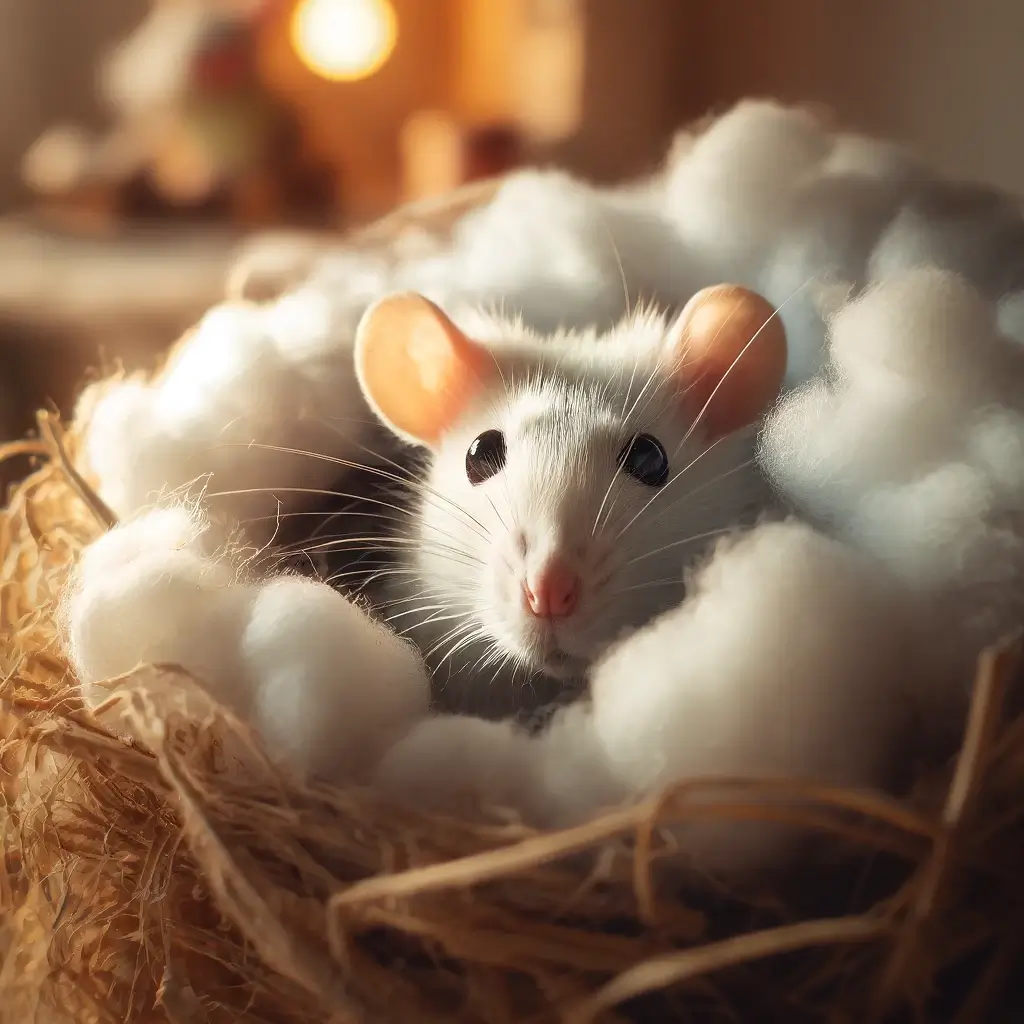Mongolian gerbils, with their inquisitive nature and playful energy, can be captivating companions. However, to truly thrive, these desert dwellers require a meticulously designed environment that caters to their natural instincts and biological needs. This comprehensive guide delves into the essential elements of creating an ideal habitat for your pet gerbils, transforming your home into a stimulating desert oasis for these charming creatures.
Understanding the Gerbil’s Natural Habitat: A Blueprint for Success
Hailing from the arid steppes of Mongolia and northern China, Mongolian gerbils are social creatures that thrive in large colonies. Imagine them scurrying through sand dunes, their keen sense of smell guiding them to hidden seeds, roots, and insects. Their nocturnal habits are an adaptation to the harsh desert environment, with most activity occurring during the cooler evenings and twilight hours. By understanding their natural habitat, we can create a space that fulfils their burrowing instincts, promotes exercise, and provides a sense of security.
The Foundation: Selecting the Perfect Cage
The cage serves as your gerbils’ primary domain, their haven for exploration, play, and rest. Here’s what to consider when choosing the ideal gerbil habitat:
- Spacious Sanctuary: A minimum floor space of 40 gallons (150 litres) is recommended for a pair of gerbils. Larger cages are always better, allowing ample room for exercise, exploration, and separate areas for sleeping and playing.
- Material Matters: Multi-level wire cages with a solid bottom are a popular choice. Glass aquariums offer excellent ventilation but can limit climbing opportunities. Avoid cages with mesh floors, as these can injure tiny gerbil feet.
- The Power of Levels: Multi-level cages provide valuable vertical space, encouraging climbing and exploration. Ramps should be solid and have a textured surface to prevent slipping.
- Security and Privacy: Provide hiding spots like nesting boxes made from wood or cosy plastic igloos. Cardboard boxes, paper bags, and PVC pipes can also be used, offering gerbils a sense of security and a place to retreat.
Bedding: Creating a Soft and Burrowing Paradise
Bedding plays a crucial role in your gerbils’ comfort and well-being. Here are some key factors to consider:
- Skip the Scents: Avoid cedar chips and pine shavings, as their aromatic oils can irritate gerbils’ respiratory systems.
- Natural Comfort: Opt for soft, absorbent materials like shredded paper, recycled paper pellet litter, or aspen shavings.
- Burrowing Bliss: Provide a deep layer of bedding, at least 6-8 inches thick, allowing your gerbils to fulfil their natural burrowing instincts and create tunnels. Rotate the bedding regularly to maintain hygiene and freshness.
Essential Furnishings: Enrichment and Activity
While a spacious cage and comfortable bedding are essential, adding functional furnishings transforms the space into an enriching environment:
- Exercise Wheel: Gerbils are energetic creatures that require ample opportunities for exercise. A solid-surface wheel sized appropriately for gerbils allows them to burn off steam and promotes physical well-being. Choose a quiet wheel to prevent nighttime disturbances.
- Food and Water Stations: A heavy ceramic dish for food pellets and a water bottle with a metal tip are the perfect choices. Position them strategically to avoid spilling into the bedding.
- Hay Feeder: Unlimited access to high-quality hay is essential for gerbils’ digestive health. A hay feeder keeps hay clean and prevents them from wasting it.
- Sand Bath Delight: Gerbils enjoy dust baths to keep their fur clean and healthy. A small dish filled with chinchilla dust allows them to indulge in this natural behaviour, promoting healthy fur and reducing stress.
Beyond the Basics: Crafting a Stimulating Environment
To truly enrich your gerbils’ lives, go beyond the essentials and offer a variety of stimulating elements:
- Rotate Toys Regularly: Gerbils can become bored with the same toys over time. Introduce new chew blocks, foraging toys with hidden treats, and digging boxes filled with shredded paper to keep them mentally stimulated. Homemade toys are a fantastic and cost-effective option.
- Climbing Paradise: Gerbils love to climb. Add ladders, branches, and climbing structures to their cage, creating an adventurous playground. Ensure all climbing structures are stable and secure.
- Gerbil-Safe Plants: Fresh herbs like basil, parsley, and mint can be offered as occasional treats. Ensure they are thoroughly washed and free of pesticides before offering them to your gerbils.
Supervised Outdoor Time
During warm weather, provide supervised outdoor time in a gerbil-safe enclosure. This allows them to experience fresh air, natural sunlight, and a change of scenery. Here are some crucial safety considerations:
- Escape-Proof Enclosure: The enclosure should be made of secure wire mesh with a solid bottom to prevent digging escapes. Ensure all connections are secure and there are no gaps for your gerbils to squeeze through.
- Protection from Elements: Place the enclosure in a shaded area protected from direct sunlight, wind, and rain. Extreme temperatures can be dangerous for gerbils, so avoid outdoor time during very hot or cold days.
- Predatory Protection: Ensure the enclosure is secure from predators like cats, birds, and snakes. Never leave your gerbils unattended outdoors.
Lighting: Mimicking the Natural Cycle
Gerbils are nocturnal creatures, so it’s important to mimic their natural light cycle. Avoid placing their cage in direct sunlight, and during the evening, provide a gentle light source for a few hours. During the day, allow natural light to filter through, but ensure a shaded area is available for them to retreat to. Avoid sudden changes in light levels, as this can disrupt their sleep-wake cycle.
Temperature and Humidity Control: Maintaining a Desert Oasis
Gerbils thrive in dry climates with moderate temperatures. Here’s how to maintain a comfortable environment:
- Ideal Temperature Range: Aim for a room temperature between 68°F and 78°F (20°C and 26°C). Avoid placing the cage near drafts, radiators, or air conditioners.
- Humidity Matters: Gerbils are sensitive to humidity. Maintain a low humidity level (around 30-40%) to prevent respiratory issues. Avoid placing the cage near sources of moisture like fish tanks or humidifiers.
Cleaning and Maintenance: Ensuring a Healthy Habitat
Regular cleaning is vital for maintaining a healthy environment for your gerbils:
- Spot Cleaning: Spot clean the cage daily to remove soiled bedding, uneaten food, and wet spots. This helps control odours and prevents the growth of bacteria.
- Thorough Cleaning: Perform a thorough cleaning of the cage at least once a week. Remove everything from the cage and wash it with warm water and a pet-safe disinfectant. Completely replace the bedding and ensure everything is dry before reassembling the cage.
- Never Clean with Harsh Chemicals: Avoid using harsh chemicals or strong-smelling cleaning products, as these can irritate your gerbils’ respiratory systems.
Conclusion: A Labour of Love for Happy and Healthy Gerbils
Creating an ideal habitat for your pet gerbils requires planning, dedication, and a commitment to their well-being. By providing a spacious cage, comfortable bedding, enriching furnishings, and a stimulating environment, you can transform your home into a desert oasis for these playful creatures. Remember, a clean and well-maintained habitat promotes good health, reduces stress, and encourages natural behaviours. The joy and companionship your gerbils bring make the effort of creating a perfect habitat truly worthwhile.









